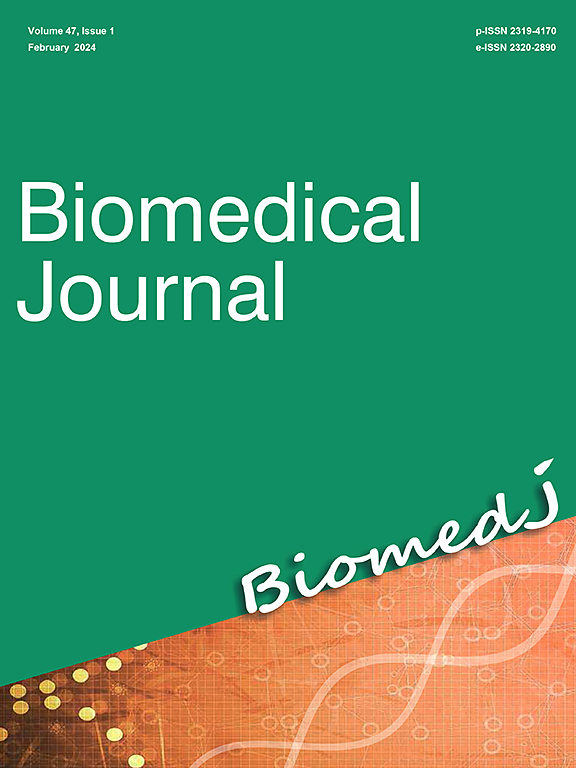Applications of deep learning in trauma radiology: A narrative review
IF 4.4
3区 医学
Q2 BIOCHEMISTRY & MOLECULAR BIOLOGY
引用次数: 0
Abstract
Diagnostic imaging is essential in modern trauma care for initial evaluation and identifying injuries requiring intervention. Deep learning (DL) has become mainstream in medical image analysis and has shown promising efficacy for classification, segmentation, and lesion detection. This narrative review provides the fundamental concepts for developing DL algorithms in trauma imaging and presents an overview of current progress in each modality. DL has been applied to detect free fluid on Focused Assessment with Sonography for Trauma (FAST), traumatic findings on chest and pelvic X-rays, and computed tomography (CT) scans, identify intracranial hemorrhage on head CT, detect vertebral fractures, and identify injuries to organs like the spleen, liver, and lungs on abdominal and chest CT. Future directions involve expanding dataset size and diversity through federated learning, enhancing model explainability and transparency to build clinician trust, and integrating multimodal data to provide more meaningful insights into traumatic injuries. Though some commercial artificial intelligence products are Food and Drug Administration-approved for clinical use in the trauma field, adoption remains limited, highlighting the need for multi-disciplinary teams to engineer practical, real-world solutions. Overall, DL shows immense potential to improve the efficiency and accuracy of trauma imaging, but thoughtful development and validation are critical to ensure these technologies positively impact patient care.



深度学习在创伤放射学中的应用:叙述性综述。
在现代创伤护理中,诊断成像对于初步评估和识别需要干预的损伤至关重要。深度学习(DL)已成为医学图像分析的主流,并在分类、分割和病变检测方面显示出良好的效果。这篇叙述性综述提供了在创伤成像中开发深度学习算法的基本概念,并概述了每种模式的当前进展。DL 已被用于检测创伤超声聚焦评估 (FAST) 中的游离液体、胸部和骨盆 X 光片以及计算机断层扫描 (CT) 扫描中的创伤发现、头部 CT 中的颅内出血、脊椎骨折检测,以及腹部和胸部 CT 中脾脏、肝脏和肺脏等器官的损伤。未来的发展方向包括:通过联合学习扩大数据集的规模和多样性;提高模型的可解释性和透明度,以建立临床医生的信任;整合多模态数据,为创伤性损伤提供更有意义的见解。尽管一些商业人工智能产品已获得食品药品管理局的批准,可用于创伤领域的临床应用,但其应用仍然有限,这凸显了多学科团队设计实用、真实世界解决方案的必要性。总体而言,DL 在提高创伤成像的效率和准确性方面显示出巨大的潜力,但要确保这些技术对患者护理产生积极影响,深思熟虑的开发和验证至关重要。
本文章由计算机程序翻译,如有差异,请以英文原文为准。
求助全文
约1分钟内获得全文
求助全文
来源期刊

Biomedical Journal
Medicine-General Medicine
CiteScore
11.60
自引率
1.80%
发文量
128
审稿时长
42 days
期刊介绍:
Biomedical Journal publishes 6 peer-reviewed issues per year in all fields of clinical and biomedical sciences for an internationally diverse authorship. Unlike most open access journals, which are free to readers but not authors, Biomedical Journal does not charge for subscription, submission, processing or publication of manuscripts, nor for color reproduction of photographs.
Clinical studies, accounts of clinical trials, biomarker studies, and characterization of human pathogens are within the scope of the journal, as well as basic studies in model species such as Escherichia coli, Caenorhabditis elegans, Drosophila melanogaster, and Mus musculus revealing the function of molecules, cells, and tissues relevant for human health. However, articles on other species can be published if they contribute to our understanding of basic mechanisms of biology.
A highly-cited international editorial board assures timely publication of manuscripts. Reviews on recent progress in biomedical sciences are commissioned by the editors.
 求助内容:
求助内容: 应助结果提醒方式:
应助结果提醒方式:


